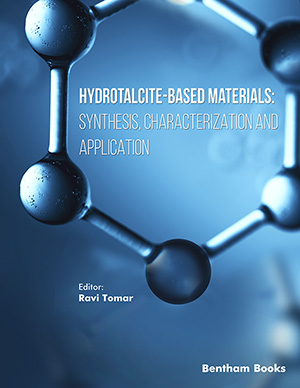
Abstract
Mentha and Thymus are important genera of the Lamiaceae family widely distributed in the entire World and commonly used in traditional medicine. Indeed, many species of the two genera have been credited with a large list of health-benefit effects, including antioxidant, anti-inflammatory, antimicrobial, analgesic, neuroprotective and anticarcinogenic. In turn, these properties have been associated to the polyphenolic composition of the plants. The present review summarizes the phenolic constituents found in Mentha and Thymus genera, as well as the main methods applied in their extraction, purification and identification. Reported species of Mentha and Thymus usually comprise derivatives of caffeic acid and distinct glycosidic forms of the flavonoids luteolin, apigenin, eriodictyol and naringenin. At present, the phenolic composition of many relevant plants of Mentha and Thymus is still unknown and thus, more studies are required for the adequate phenolic characterization of these two genera. In this context, the present implementation of faster and reliable analytical methodologies, as e.g. the chromatographic techniques hyphenated with mass spectrometry, will surely be an enormous tool in the upgrading of the missing information.
Keywords: Mentha, Thymus, Phenolic compounds, Phenolic acids, Flavonoids, HPLC, Mass spectrometry, NMR
Current Analytical Chemistry
Title:Overview on Mentha and Thymus Polyphenols
Volume: 9 Issue: 3
Author(s): Olivia R. Pereira and Susana M. Cardoso
Affiliation:
Keywords: Mentha, Thymus, Phenolic compounds, Phenolic acids, Flavonoids, HPLC, Mass spectrometry, NMR
Abstract: Mentha and Thymus are important genera of the Lamiaceae family widely distributed in the entire World and commonly used in traditional medicine. Indeed, many species of the two genera have been credited with a large list of health-benefit effects, including antioxidant, anti-inflammatory, antimicrobial, analgesic, neuroprotective and anticarcinogenic. In turn, these properties have been associated to the polyphenolic composition of the plants. The present review summarizes the phenolic constituents found in Mentha and Thymus genera, as well as the main methods applied in their extraction, purification and identification. Reported species of Mentha and Thymus usually comprise derivatives of caffeic acid and distinct glycosidic forms of the flavonoids luteolin, apigenin, eriodictyol and naringenin. At present, the phenolic composition of many relevant plants of Mentha and Thymus is still unknown and thus, more studies are required for the adequate phenolic characterization of these two genera. In this context, the present implementation of faster and reliable analytical methodologies, as e.g. the chromatographic techniques hyphenated with mass spectrometry, will surely be an enormous tool in the upgrading of the missing information.
Export Options
About this article
Cite this article as:
R. Pereira Olivia and M. Cardoso Susana, Overview on Mentha and Thymus Polyphenols, Current Analytical Chemistry 2013; 9 (3) . https://dx.doi.org/10.2174/1573411011309030008
| DOI https://dx.doi.org/10.2174/1573411011309030008 |
Print ISSN 1573-4110 |
| Publisher Name Bentham Science Publisher |
Online ISSN 1875-6727 |
Call for Papers in Thematic Issues
Advanced Nanomaterials and Nanocomposites: Controlled Synthesis and Applications for Bioanalysis
In recent years, a range of novel nanomaterials have been developed and found broad applications in various fields. By controlling the synthesis process and modifying the nanomaterials, novel properties and functions can be tailored to form nanocomposites. This thematic issue aims to highlight the latest advances in the preparation of ...read more
Advancements in Biomedicine, Corrosion Inhibition/Monitoring, and Lubrication of Carbon Dots
Carbon dots, a class of carbon-based nanomaterials, have garnered substantial interest in various scientific and engineering fields due to their unique properties, including excellent optical properties, outstanding biocompatibility, easy preparation, good dispersity, ultrasmall size, low toxicity and environmental friendliness. This special issue of Current Analytical Chemistry aims to showcase cutting-edge ...read more
Advances in Microfluidic and Sensing Technologies of Biofluids
Detection of biological fluids is an important means to assess human health and diagnose diseases. Currently, research on blood is relatively mature and widely applied in the medical field. With the development and advancement of microfluidic technology and novel detection methods, attention has turned to human physiological fluids such as ...read more
Analytical Methods for Environmental and Food Analysis
In recent years, the study of the chemical composition of food and the environment has depended on analytical methods in order to acquire information about the chemical composition, processing, quality control, and contamination of soil, water, air, plants, and foods. These aspects are very important for food safety and environmental ...read more
 31
31
- Author Guidelines
- Graphical Abstracts
- Fabricating and Stating False Information
- Research Misconduct
- Post Publication Discussions and Corrections
- Publishing Ethics and Rectitude
- Increase Visibility of Your Article
- Archiving Policies
- Peer Review Workflow
- Order Your Article Before Print
- Promote Your Article
- Manuscript Transfer Facility
- Editorial Policies
- Allegations from Whistleblowers
























